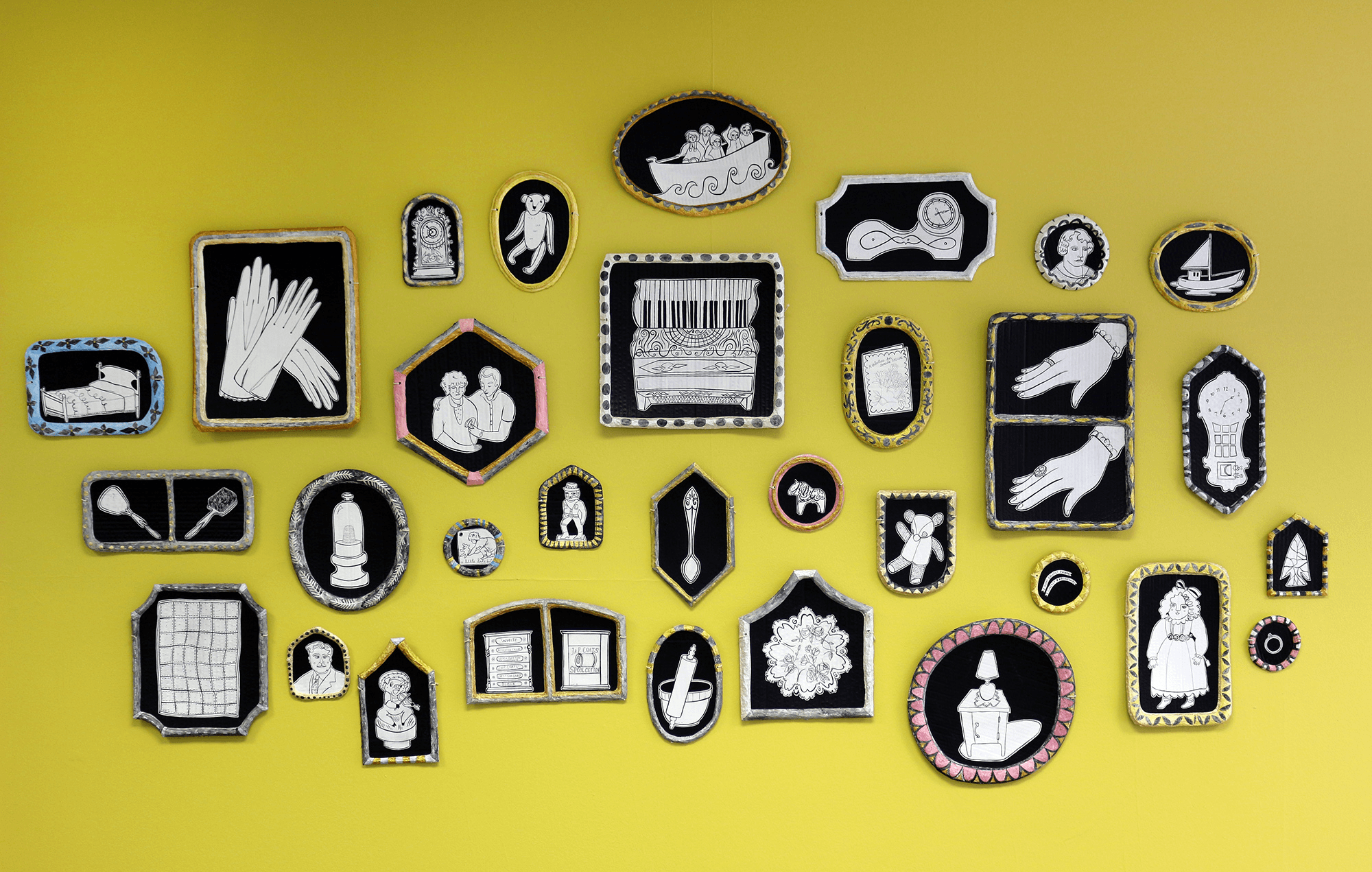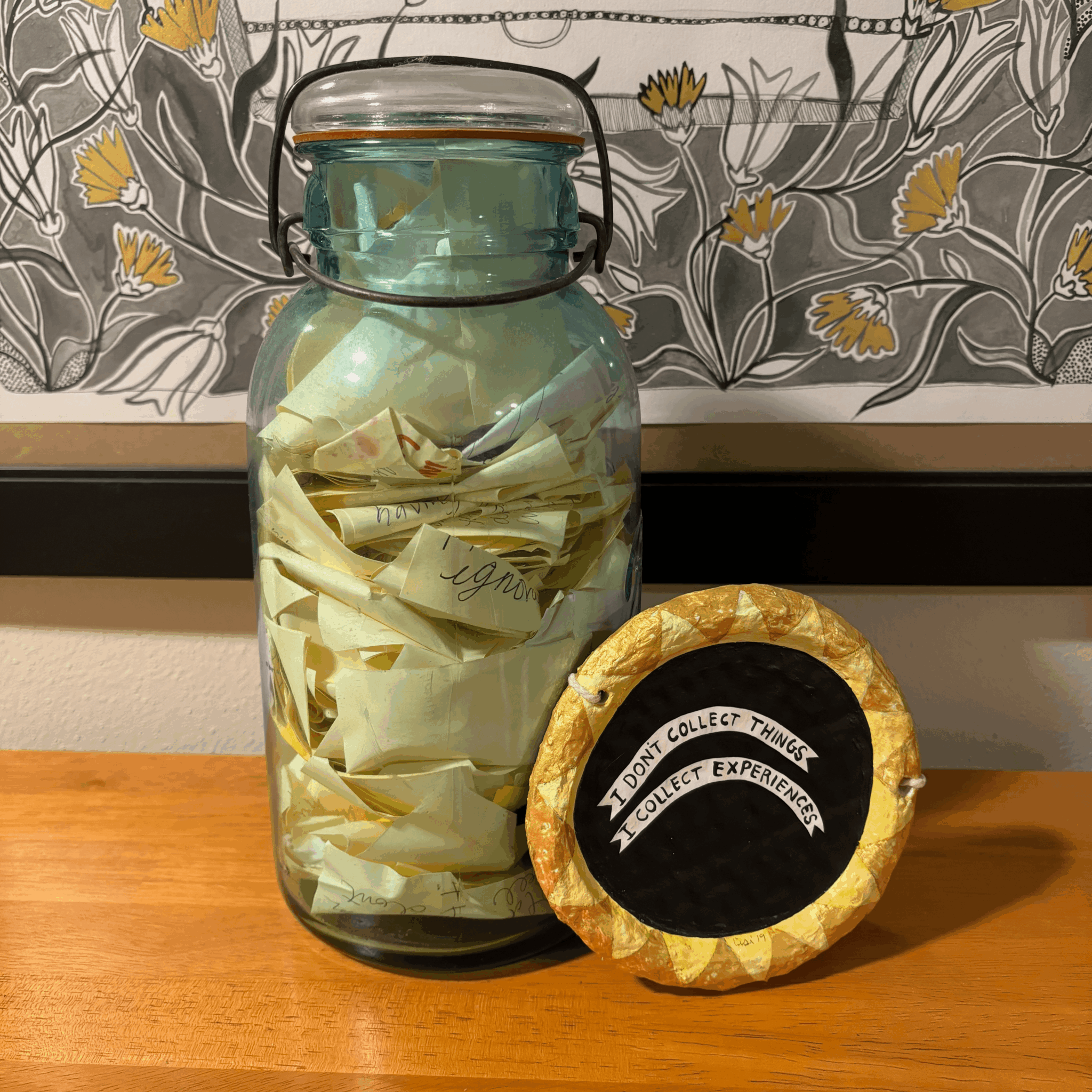We caught up with the brilliant and insightful Elyse-krista Mische a few weeks ago and have shared our conversation below.
Elyse-Krista, thanks for taking the time to share your stories with us today Has your work ever been misunderstood or mischaracterized?
It wasn’t until many years into my creative practice that I deeply understood my own motives for making art or the meaning within my work. I was a prolific artist and existential thinker but I could only explain myself and my work on the surface. There was a disconnect between visual narrative and explanation. This muddled state of being and creating began to clarify after a studio visit with an individual who, amidst my slew of euphemisms, said to me “you know you make work about death, right?”. Indeed, I did not. Or at least I knew deep down but couldn’t consciously or directly acknowledge the fact.
As I stood in front of a series of recently made mixed-media paintings titled Places In Between, adorned with floating figures representing different post-death existences, I realized that my own misunderstanding of the apparently obvious-to-others theme stemmed from a fear of being misunderstood. The topic of death tends to get a bad rap and people who want to talk about concepts of death outside of very narrow context, they also often get a bad rap. I could continue denying myself of truth or I could see where the vulnerability would take me. Within this moment of clarity I felt empowered to own the topic of death both internally and externally, thus choosing to use my creative practice as a tool to enact change in how I and others view, think, and talk about existential issues.
Looking back, I see how easy it can be to fear looking at your own truth, to really acknowledge how your subconscious and creativity can lead you to figurative and literal places you never imagined to be possible. Its scary to take a step into this unknown where you can be more vulnerable, yet, in doing so you become more resilient. I also have found that the fear of misunderstanding is itself a misconception because in choosing to explore a sensitive topic through art and research, I am delighted by the support I have received and the vast number of people who see my creative practice as an invitation to join in on the creation and conversation. Also, it feels really great having more balance between my own internal and external worlds.
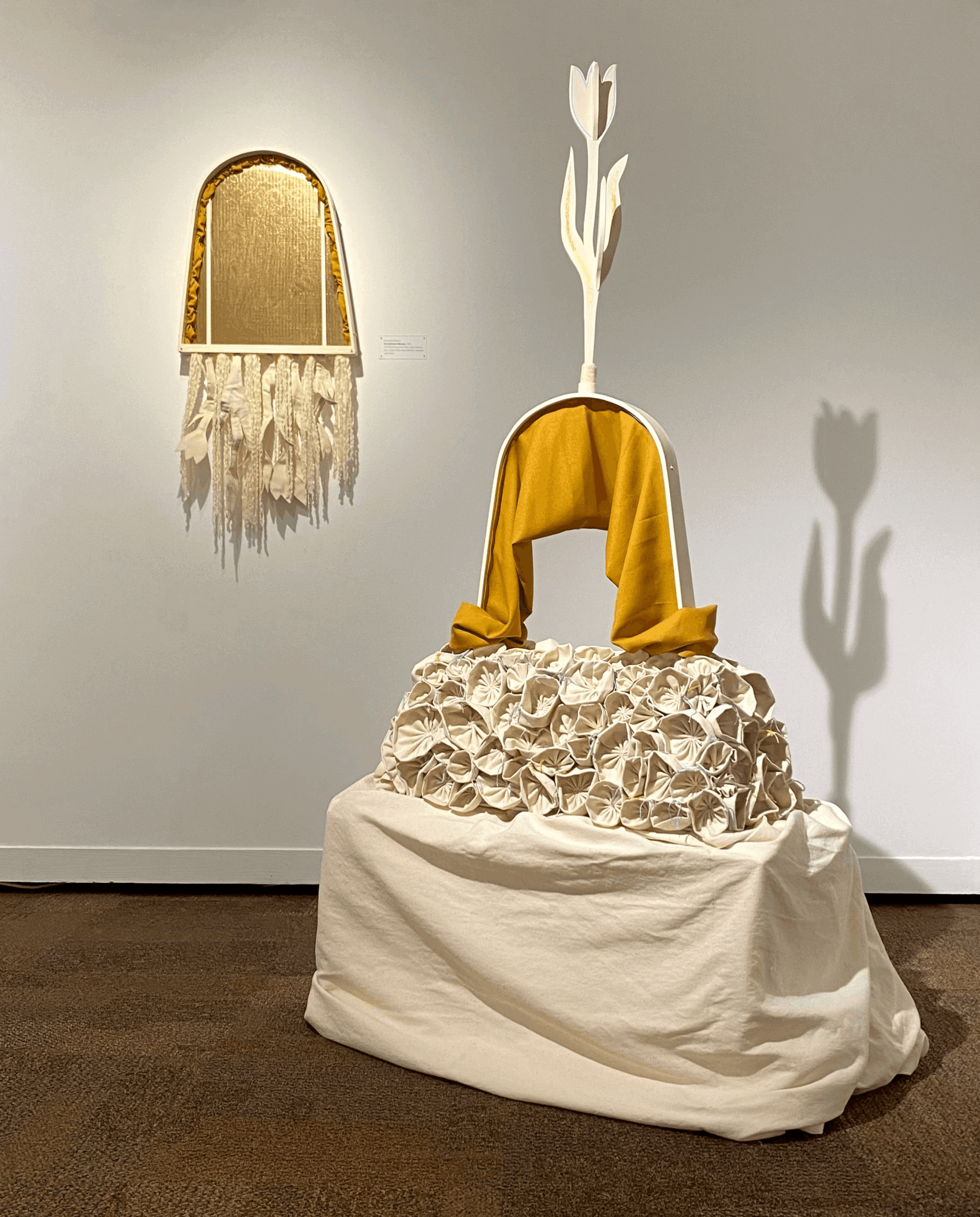
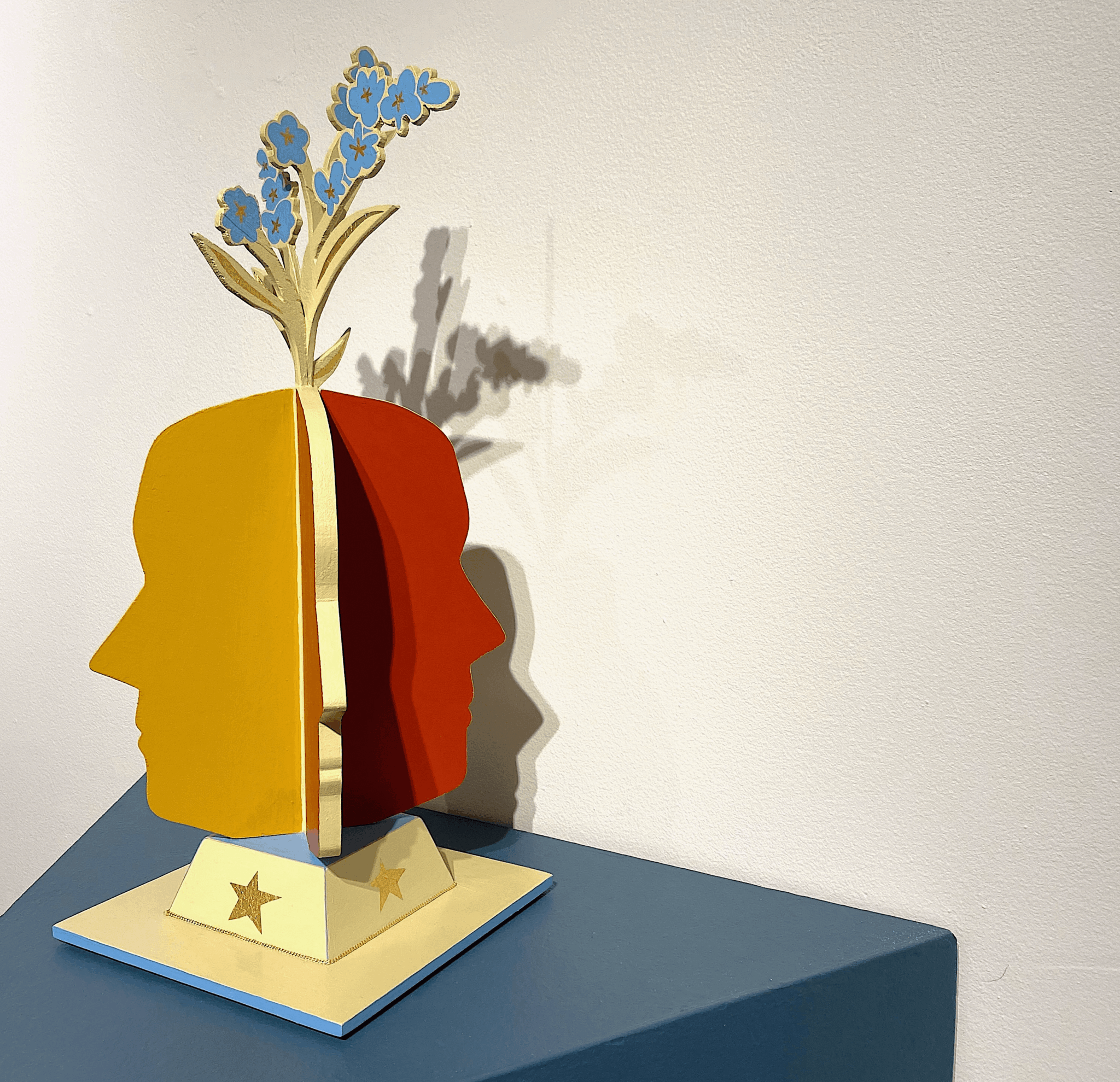
Great, appreciate you sharing that with us. Before we ask you to share more of your insights, can you take a moment to introduce yourself and how you got to where you are today to our readers.
To most adequately introduce my present-day pursuits, I must do a little rewind in time to the year 1994. This year is memorable to me for three reasons:
1. The Lion King debuted and was Voted 2nd for saddest death to occur in a 1994 film.
2. Four Weddings and a Funeral debuted as another memorable film about death, highlighting epic 90’s funeral fashion.
3. Six-year-old me read a National Geographics for Kid’s magazine article about the extinction of dinosaurs which made me realize that if dinosaurs ceased to exist, then people (including myself) would inevitably die too. This was my first experience of mortality salience (death awareness).
As I grew up and experienced many deaths of friends and relatives, my existential curiosity grew while talking about death to the degree I desired felt increasingly taboo at home and in school. Without an adequate audience or know-how to verbally express this mortality salience, my creative practice emerged out of necessity as I began using my imagination as a tool to explore and express my existential frustrations. Within the daily reality of modern Western cultures, topics of death are regularly kept out of sight and out of mind because acknowledging death means we acknowledge our own impermanence. Subsequently, in attempt to protect oneself from mortal whelm, people often lack a meaningful and holistic relationship with death which is a common source of increased existential anxiety.
Facing death creatively does not resolve death anxiety nor does it remove social taboos. Rather, creative engagement expands choices and options for how to manage and adapt to existential whelm by promoting flexibility, openness, empathy, and motivation. Now in present-day, my personal and professional interests are motivated by a mission to create space for existential conversation while seeking to better comprehend how two universal components of the human condition, creativity and death, affect how people live their lives, cope with loss, and prepare for end-of-life. I fulfill my mission in the following ways:
1). Creative Practice. Through my own creative practice, I use art as a tool alongside interactions with people and place to explore the diverse ways individuals balance existence with non-existence while considering how people remember or want to be remembered. Driven by the concept of the post-self, the ways we continue to exist after death, I see art as a means for preserving a breadth of individual and collective thoughts, emotions, and experiences. Both the diversity and universality of existential topics can be a point of connection that encourages self-awareness and other awareness. Whether it be my Gravestone Graphics series which is a collection of simple paintings on repurposed cardboard, my ceramic Worry Birds® which soothe the pains of life and loss, or my short film Soul Cycle which considers the nature of a soul; my art asks for a pause amidst the speed of time to appreciate the unknown and reflect on what it means to be here now… and maybe later in some nature of transcendence.
2). Death Education. Thirteen years after receiving a BA in Art & Art History from Lawrence University in (Appleton, WI), I transcend the preconceived boundaries of my creative exploration of death with a Master of Science in Thanatology degree from Marian University (Fond du Lac, WI). Thanatology is the scientific study of death and a formal means of death education. Although death education and resourcing initiatives are occurring amidst the death denying ethos of the United States, the accumulated knowledge on death-related topics has yet to be fully applied, made easily accessible, or widely offered through less formal and consistent means. Formal or not, death education can equip individuals with the knowledge, skill, experience, and social networks to understand, communicate, and act upon advanced planning or end-of-life death care options. A holistic and factual understanding of death alongside the familiarity with resources, services, and support promotes existential resilience. Increasing my own knowledge has made me more resilient and better equipped to educate and support others within my community and beyond.
3). Funeral Profession. I work for a local funeral home as a Funeral Ambassador, assisting funeral directors and families with funeral services. I also fill in as a hostess, provide administrative assistance, help create printed goods such as memorial folders and prayer cards, and I have the honor of driving the coach (hearse). The funeral industry is not only a means of job security, but the role also inspires my creative work and I feel a sense of pride serving and supporting the people in my community.
4). Community Connection. Within my community, people think about death, and many want to learn, prepare, or talk about death-related topics with others. However, we lack free or easy to access platforms outside of healthcare systems or funeral services for the general community to explore, expand, and engage with existential topics both individually and collectively throughout their lives. Because I want to talk about death and I seek creative ways to include others in conversation, in January of 2024, the Trout Museum of Art and I joined forces to launch Appleton, Wisconsin’s first death café program, Fare-Well: Art & Death Café. We received grant funding and local business sponsorship to provide this free community-centered creative engagement and death education gathering with intention to normalize and encourage community conversations about death and mortality through the lens of history, art, and creativity. Twice per month I guide participants in exploring a different death-related topic through presentation, video, poetry, or other means coupled with an art project, cookies, and ample time to share and learn from others’ perspectives. Fare-Well: Art & Death Café is a gateway for moments of conversation in the art studio, home, and community to help people to individually find more meaning in their existence and non-existence with hope that we may all collectively fare well.
5. Fare-Well.com. Stay tuned-in for a special project I have been working on and hope to launch by the beginning of 2025. Fare-well.com is a welcoming death education and resourcing platform with diverse and accessible information for people to use on their own or with others to explore existential beliefs, broaden death attitudes, navigate loss and grief, seek resources or services, and foster community connection. Functioning as a one-stop-shop for death education, website visitors can navigate topics of interest to curate an experience that best suits their needs. Fare-well.com organizes a breadth of existential and death-related content alongside creative tools, media, and activities. The content reflects consideration of multiple factors that can affect receptivity which include developmental stages, learning preferences, ethnicity, spiritual beliefs, and familiarity with death or loss. The goal is to provide options and choices that empower individuals to learn with a sense of control over the uncontrollable.
Ultimately, within the intersections between my personal, professional, and creative lives, I conclude that creative engagement functions as a bridge between the internal processing of challenging information and the external expression or practical application of knowledge. How individuals view, manage, and prepare for death will reverberate into the lives of others, we should be able to talk about the good and the bad together. So, as a human living this sweet, sad, hard, and brilliant existence, I employ the innate and evolutionary superpower of creativity as a tool to reimagine, represent, communicate and expand the human experience for myself and others in and after life.
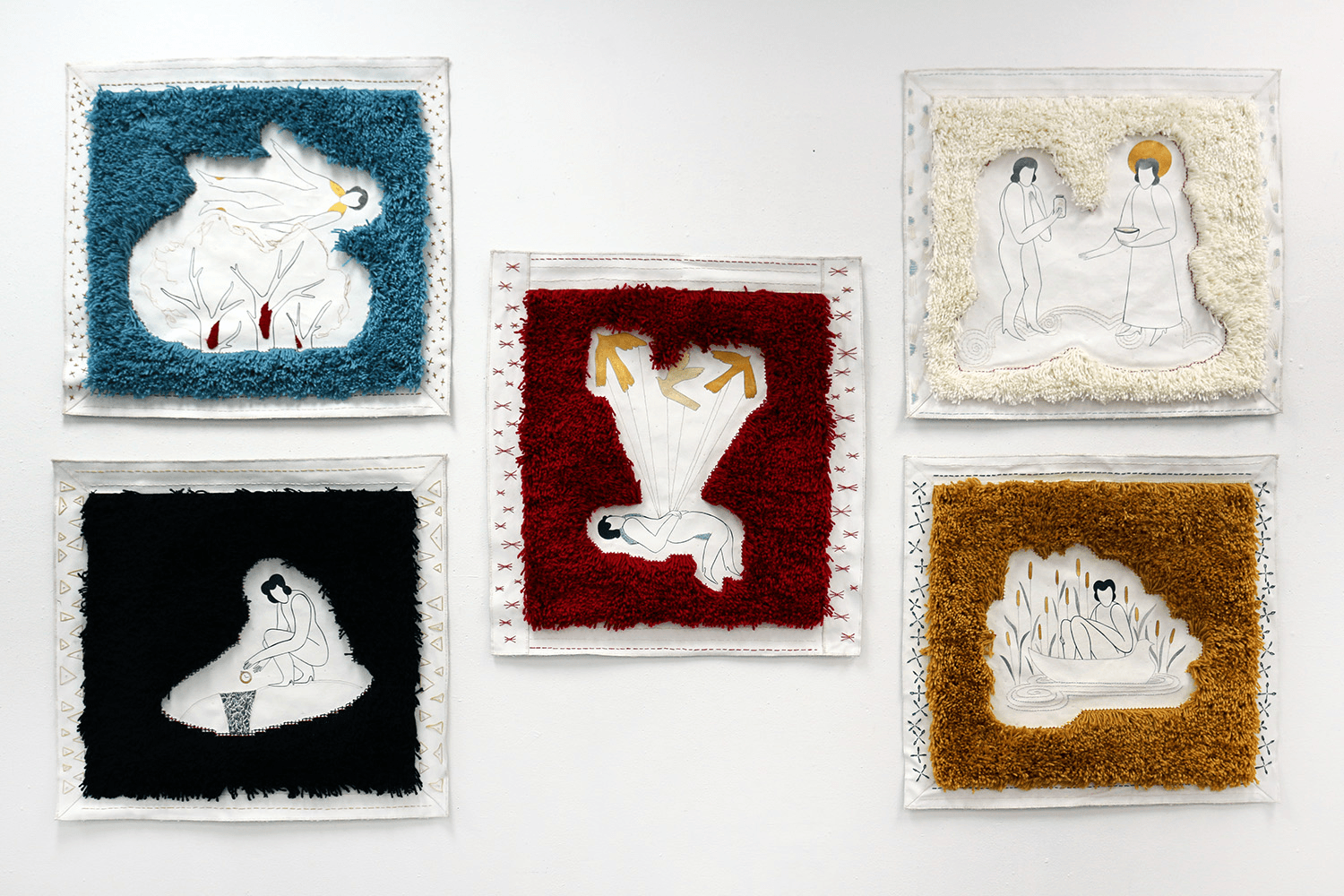
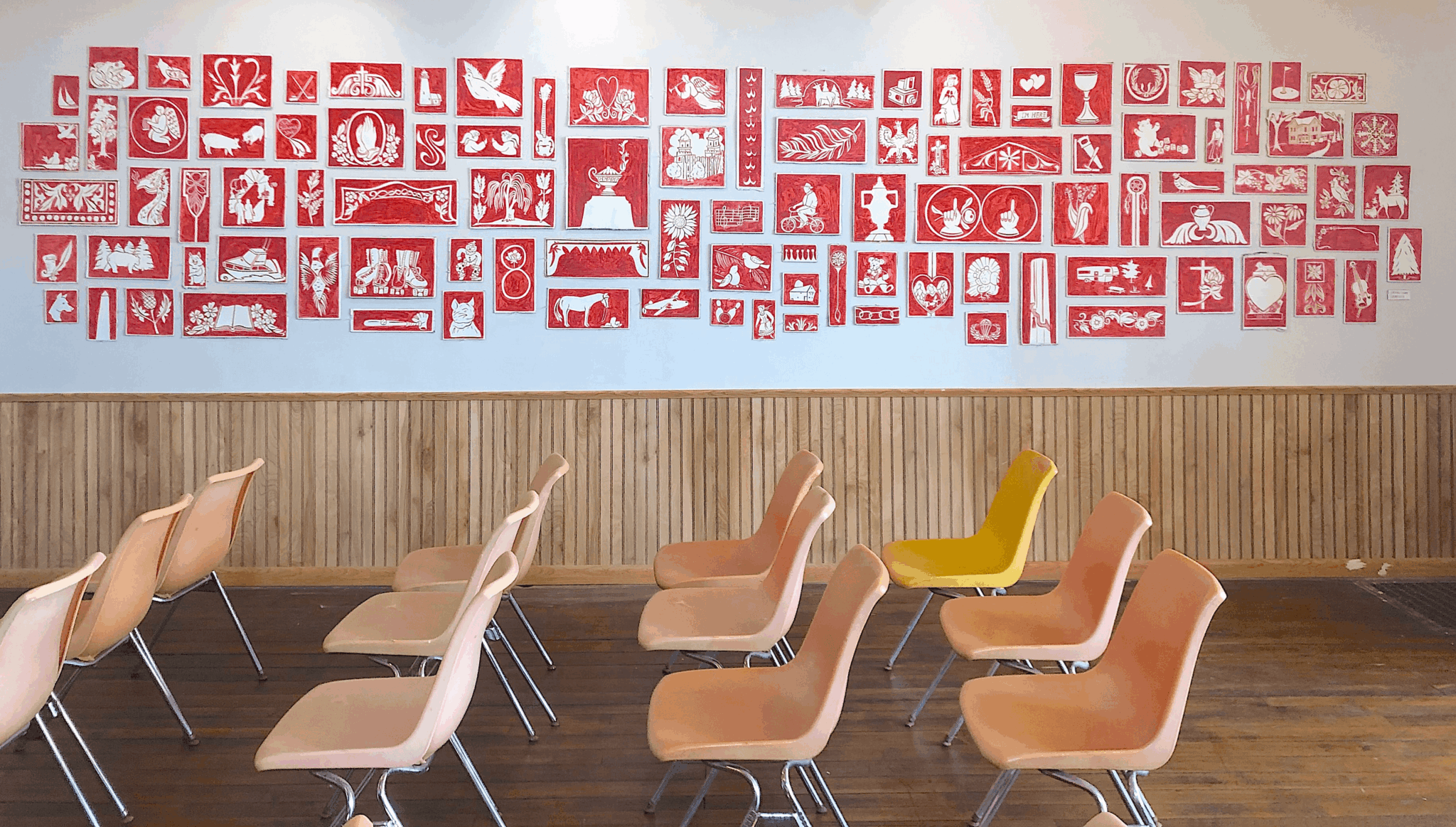
How about pivoting – can you share the story of a time you’ve had to pivot?
In 2019 I returned home to Wisconsin after a long run of artist residencies. I felt an obligation to work a “real” job for a while, so I decided to become a Certified Nursing Assistant (C.N.A.) and Med Tech for older adults and hospice patients. This experience was to be part-time to allow for creative-time and would double as creative research. And, then the year 2020 arrived and I was a C.N.A. working quadruple time in a global pandemic with minimally spare time to briefly sleep.
While most of our friends, family, and neighbors were subjected to lock-downs, my partner and I had jobs that required us to continue go out in the world. I remember how still the world was as I drove at dawn or dusk to and from the hectic micro-world of work. Working with older adults and the dying at this time was bittersweet, is bittersweet. Due to isolation, I wasn’t only a caregiver, but I also took on countless other roles out of necessity which included friend, activity coordinator, family member, makeshift chaplain, and death doula.
I didn’t make a lot of art during this time; I didn’t have the energy. This was a difficult truth for me to accept, I felt like I was failing my creative career even though I was so busy serving others. And, in this pivot to serving others I learned an important lesson about my creative practice, how taking time to serve and interact with people and place primes creative acts. I was creating an inventory of inspiration as I carried Post-it-notes around in my scrubs, jotting down thoughts, words of wisdom, and musings from that magical space we find in the pause between conversations or tasks.
From this time spent with others both running around and waiting, I realized how precious human connection is, the correlation between self-compassion and compassion for others, how sad it is to die alone yet how sweet it can be to help someone die, how life is both long and short, and I surprisingly began to better understand the trajectory of my creative career.


Is there something you think non-creatives will struggle to understand about your journey as a creative? Maybe you can provide some insight – you never know who might benefit from the enlightenment.
I once was awarded an artist residency where I lived and made artwork in an assisted living community with older adults in the small town of Fergus Falls, Minnesota. I learned an important lesson while working on a series called Mementos, a collection of papier-mâché paintings representing the objects by which we remember others and by which we ourselves want to be remembered. I would sit with individuals in their apartments or in the dining room over coffee and cookies as people showed me or told me about photographs, knickknacks, awards, furniture, and other objects. Everyone had a special object to share, that is everyone but Gary who seemed to gaze into the depths of my soul as he so eloquently said “I do not collect things, I collect experiences”.
Too often in life or in art we put emphasis on the thing, the end-product, or the destination rather than the journey or path taken to get there. So often I hear “I can’t do ____ because I am not good at it” which inhibits trying or people judge what they do or make as good or bad which detracts from their effort to try. Applied to creativity and art making, Gary’s wise words mean that “process has power over product”. Which is actually scientifically true as creativity research finds that therapeutic effect and benefit is increased during the act of making, no matter the level of skill. Listen to Gary, be easy on yourself, savor the process, and I can almost guarantee that you will be more pleased in the end.
Contact Info:
- Website: https://Lifepropaganda.com
- Instagram: ekmische
- Facebook: Elyse-Krista AnnaMarie Mische
- Linkedin: Elyse-Krista Mische
- Other: Coming soon, Fare-Well.com
